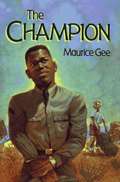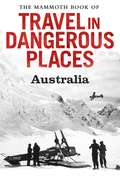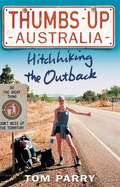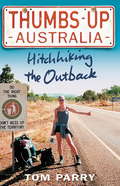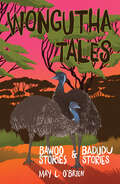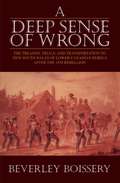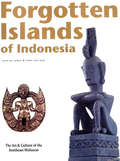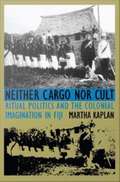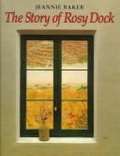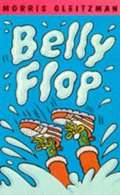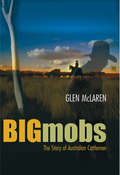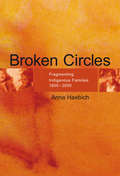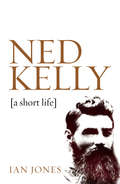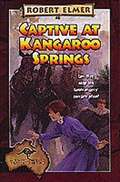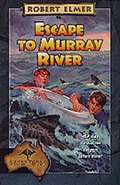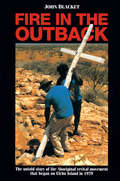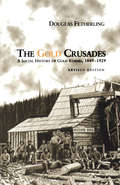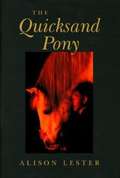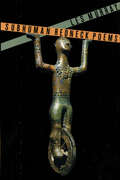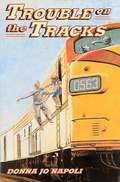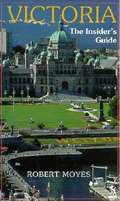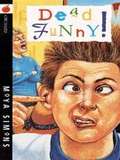- Table View
- List View
The Champion
by Maurice GeeIn 1943 twelve-year-old Rex sees his quiet New Zealand village dramatically changed by the arrival of a black American soldier on leave from the war.
Hestorian Taotao Tano': History of the Chamorro People
by Political Status Education Coordinating CommissionCONTENTS PART I: CHAMORRO PREHISTORY Introduction UNIT 1: The Quest for a Home and Identity Section A Clues to the Puzzle Clues from Ancestral Remains Clues from Language Clues from Tools and Pottery Clues from Plants Putting the Clues Together Section B Looking for a Home Section C The Pacific Section D The Navigators Section E Settlements UNIT 2: The Life of the Ancient Chamorros Section A Economics and Society Section B Home and Family Section C The Manmaga'lahi and Manmaga'haga Section D The Guma' Uritao Section E Marriage and Home Section F Beliefs Section G Magic and Medicine PART II: CONTACT WITH THE EUROPEANS Introduction UNIT 1: Contact with the Europeans Section A A Tale about How it might have Happened Section B The Search for Wealth and Power Section C Conversion, Conquest and Colonization Section D The Religion of the Chamorros UNIT 2: Bringing Christianity to the Chamorros Section A Padre San Vitores and the Chamorros Section B Trouble Over Differences Section C Chamorro Leaders Who Rebelled Section D Guam in the 18th and 19th Centuries Section E The Continuing Role of Chamorro Women English Glossary Chamorro Glossary
The Mammoth Book of Travel in Dangerous Places: Australia (Mammoth Books #348)
by John KeayLandfall at Botany Bay - James CookThe son of a Yorkshire farm labourer, Cook won distinction as a naval hydrographer but was still a controversial choice to command a voyage of scientific observation to the Pacific in 1768. Its results, including the first coastal surveys of New Zealand and eastern Australia, led to a second voyage to the south Pacific and a third to the north Pacific, during which he was killed in a fracas with the Hawaiians. It was a tragic end for one whose humble origins disposed him to respect indigenous peoples. "They are far happier than we Europeans", he noted of Australia's aborigines following a brief encounter at Botany Bay (Sydney), the first European landing on the Pacific coast, in 1770.Escape from the Outback - Charles SturtAfter pioneering journeys to the Darling and Murray rivers, in 1844-5 Sturt headed north for the heart of Australia. Since the continent appeared to have few seaward draining rivers it was assumed that, alike Africa, it must boat an inland lake region; a boat was therefore included amongst the expeditions equipment. But Sturt failed to reach the geographical centre of the continent, and the largest stretch of water found was at Coopers Creek, later to figure so prominently in the endeavours of Burke and Wills. Sturt's painful retreat during the hottest summer on record formed a fitting prelude to the Wills saga.Death at Coopers Creek - William John WillsIn early 1861 Robert O'Hara Burke, William Wills and John King reached Australia's northern coast on the Gulf of Carpentaria, thus completing the first transcontinental crossing. Returning the way they had come, after four months of appalling hardship they staggered into Sturt's Coopers Creek where men and supplies had been left to await their return. They were just eight hours too late; the relief party, despairing of their return, had left that very morning. One of exploration's most poignant moments was followed by one of its most protracted tragedies as the expedition tried to extricate itself, failed, faded, and died. Only King survived; three months later he was discovered living with the aborigines; Will's heartbreaking journal was found lying beside his skeleton.To See the Sea - John McDouall StuartModest, dedicated, immensely tough and thoroughly congenial, Stuart was very much an explorer's explorer. With little support or fuss he began probing north from Adelaide in the late 1850's. In 1860 he was the first to reach the centre of the continent, thus completing the work of Sturt. Although Burke and Wills just beat him in the race to cross the continent, Stuart's 1862 route was much longer and more difficult; and he did actually reach the sea. He was also to return alive.
Thumbs Up Australia: Hitchhiking the Outback
by Tom ParryOn the Road meets Down Under in this really rough guide to the adventures of an enthusiastic hitchhiker and his reluctant girlfriend on their quest for the real Australia. Hitching lifts with the desert's dodgiest drivers and taking breaks in the roughest roadhouses, this is Tom Parry's witty, warts-and-all tale of hitchhiking 8,000 miles across - and around - the Australian outback with his thumb, his backpack and his French girlfriend, Katia. As the couple hitch their way around the near empty highways, they encounter as wide a cross-section of Aussie society as you could ever hope to meet. In cattle stations, Aboriginal communities, remote waterholes, caravan parks, hippy communes and roadhouses, they see a country that remains as extraordinary today as it was for the first nineteenth century settlers. Loosely following the routes carved out by the legendary explorers who first traversed the great continent, the couple get to grips with the country's fascinating history. Set against a backdrop of the real Australia - not 'as seen on TV'- "Thumbs Up Australia" is full of wonderful anecdotes and endearing tales of some of the country's most idiosyncratic characters, from the grizzled Aboriginal elder with his tales of dreamtime, to an amphetamine-swallowing road train driver. And at the end of their journey, it is ironically Katia who suggests thumbing a lift to the airport!
Thumbs Up Australia
by Tom ParryWith anecdotes and endearing tales of characters met along the way, Thumbs Up Australia follows the exploits of an English hitchhiker and his reluctant French girlfriend as the two uncover a never-before-seen Australia. Tom Parry carries the reader through almost-empty highways and a distinctively Aussie society on a journey of 8,000 miles-with just as many adventures.
Wongutha Tales
by May O'BrienFirst published as individual titles in 1992, May O' Brien' s stories were ground-breaking publications, presenting traditional Indigenous stories in a bilingual text and giving a unique insight into learning English as a second language from a First Nations perspective. Classic tales such as How Crows Became Black and Why the Emu Can' t Fly are still as fresh and appealing as ever for a new generation of junior readers. Plus May' s simple pronunciation guide for Wongutha words are perfect learning activities for the classroom.
A Deep Sense of Wrong: The Treason, Trials and Transportation to New South Wales of Lower Canadian Rebels
by Beverley BoisseryIn 1839 fifty-eight men left Montreal for the penal colony of New South Wales. They were ordinary people who had been caught up in the political whirlwind of the 1838 rebellion. Even though they were all civilians, they had been tried by court martial. Convicted of treason, their properties forfeited to the crown, they paid a heavy price for rebellion. And as convicts in Australia, they were considered the lowest of a bad lot. During their years there, however, they earned the respect of Sydney’s citizens.
Forgotten Islands of Indonesia: The Art & Culture of the Southeast Moluccas
by Joss Van Dijk Nico DejongeThis beautiful book contains fascinating text and over 170 unique photographs of one of the most interesting but least well known cultures in the Indonesian Archipelago.The traditional art of Maluku Tenggara, the Southeast Moluccas, is among the most sophisticated and expressive in the world. Simple tools were used to create masterpieces in wood, stone, textiles and precious metals, while the plaited work and earthenware of these islands are also of the very highest quality.the colonial period plunged the region into hopeless isolation. During the harsh rule of the Dutch many traditional woks of art, especially ancestor statues, were destroyed. Later, collectors stripped the islands of their masterpieces and the culture of Maluka Tenggara was forgotten.Forgotten Islands of Indonesia presents a unique survey of the finest examples of Southeast Moluccan art. This volume contains many photographs and descriptions which have never before been published. Set against the cultural background and supplemented by rare photographs taken in the field, the material culture of Maluku Tenggara, which is regarded as one of the most fascinating areas of Indonesia, is presented here comprehensively for the first time.
Forgotten Islands of Indonesia
by Joss Van Dijk Nico DejongeThis beautiful book contains over 170 unique photographs and pictures of one of the most interesting but least well known cultures in the Indonesian Archipelago.The traditional art of Maluku Tenggara, the Southeast Moluccas, is among the most sophisticated and expressive in the world. Simple tools were used to create masterpieces in wood, stone, textiles and precious metals, while the plaited work and earthenware of these islands are also of the very highest quality.the colonial period plunged the region into hopeless isolation. During the harsh rule of the Dutch many traditional woks of art, especially ancestor statues, were destroyed. Later, collectors stripped the islands of their masterpieces and the culture of Maluka Tenggara was forgotten.Forgotten Islands of Indonesia presents a unique survey of the finest examples of Southeast Moluccan art. This volume contains many photographs and descriptions which have never before been published. Set against the cultural background and supplemented by rare photographs taken in the field, the material culture of Maluku Tenggara, which is regarded as one of the most fascinating areas of Indonesia, is presented here comprehensively for the first time.
Forgotten Islands of Indonesia
by Nico Dejonge Joss Van DijkThis beautiful book contains over 170 unique photographs and pictures of one of the most interesting but least well known cultures in the Indonesian Archipelago.The traditional art of Maluku Tenggara, the Southeast Moluccas, is among the most sophisticated and expressive in the world. Simple tools were used to create masterpieces in wood, stone, textiles and precious metals, while the plaited work and earthenware of these islands are also of the very highest quality.the colonial period plunged the region into hopeless isolation. During the harsh rule of the Dutch many traditional woks of art, especially ancestor statues, were destroyed. Later, collectors stripped the islands of their masterpieces and the culture of Maluka Tenggara was forgotten.Forgotten Islands of Indonesia presents a unique survey of the finest examples of Southeast Moluccan art. This volume contains many photographs and descriptions which have never before been published. Set against the cultural background and supplemented by rare photographs taken in the field, the material culture of Maluku Tenggara, which is regarded as one of the most fascinating areas of Indonesia, is presented here comprehensively for the first time.
Neither Cargo Nor Cult
by Martha KaplanIn the 1880s an oracle priest, Navosavakadua, mobilized Fijians of the hinterlands against the encroachment of both Fijian chiefs and British colonizers. British officials called the movement the Tuka cult, imagining it as a contagious superstition that had to be stopped. Navosavakadua and many of his followers, deemed "dangerous and disaffected natives," were exiled. Scholars have since made Tuka the standard example of the Pacific cargo cult, describing it as a millenarian movement in which dispossessed islanders sought Western goods by magical means. In this study of colonial and postcolonial Fiji, Martha Kaplan examines the effects of narratives made real and traces a complex history that began neither as a search for cargo, nor as a cult. Engaging Fijian oral history and texts as well as colonial records, Kaplan resituates Tuka in the flow of indigenous Fijian history-making and rereads the archives for an ethnography of British colonizing power. Proposing neither unchanging indigenous culture nor the inevitable hegemony of colonial power, she describes the dialogic relationship between plural, contesting, and changing articulations of both Fijian and colonial culture. A remarkable enthnographic account of power and meaning, Neither Cargo nor Cult addresses compelling questions within anthropological theory. It will attract a wide audience among those interested in colonial and postcolonial societies, ritual and religious movements, hegemony and resistance, and the Pacific Islands.
The Story of Rosy Dock
by Jeannie BakerThe plant rosy dock is not native to Australia. A newcomer who settled in the desert area of central Australia planted it in her garden. After each rare period of rain the desert blossoms, and over the years the seeds of this plant have blown their way across south, central and western Australia. Full-color collage illustrations.
Belly Flop
by Morris GleitzmanMitch Weber believes there's only one way to stop everyone in town hating him. Become a champion diver. It's a risky plan, but Mitch also believes in a guardian angel called Doug. He hopes Doug is listening...
Big Mobs: The Story of Australian Cattlemen
by Glen MclarenPreviously overshadowed in the public imagination by notions of American cowboys and the wild west, Australian stockmen are given the place they so richly deserve in pastoral and Australian history in this insightful study. From the lonely months on a long cattle drive to the boots they wore and the places they lived in, the stockmen and their unique way of life is intelligently explored in this comprehensive work.
Broken Circles
by Anna HaebichThis major work reveals the dark heart of the history of the Stolen Generations in Australia. It shows that, from the earliest times of European colonization, Aboriginal Australians experienced the trauma of loss and separation, as their children were abducted, enslaved, institutionalized, and culturally remodeled. Providing a moving and comprehensive account of this tragic history, this study covers all Australian colonies, states, and territories. The analysis spans 200 years of white occupation and intervention, from the earliest seizure of Aboriginal children, through their systematic state removal and incarceration, and on to the harsh treatment of families under the assimilation policies of the 1950s and 1960s. The resistance struggle and achievements of Aboriginal people in defending their communities, regaining their rights and mending the broken circles of family life provides a compelling parallel story of determination and courage.
Ned Kelly: A Short Life
by Ian Jones'the best Kelly biography by a country mile' - The AustralianThe definitive biography of Ned Kelly - and a superb description of his times. A bestseller since it was first published, Ned Kelly: A Short Life is acknowledged as being the definitive biography. Ian Jones combines years of research into all the records of the era and exhaustive interviews with living descendants of those involved, to present a vivid and gripping account of one of Australia's most iconic figures. `It will probably stand as the definitive account of Kelly?s life and its meaning?a work of prodigious scholarship, vivid reportage and sharp analysis?the most detailed portrait of the outlaw ever written? - Rod Moran, West Australian`the definitive biographical work? - Dr John McQuilton, author of The Kelly Outbreak
Captive At Kangaroo Springs (Adventures Down Under #2)
by Robert ElmerBook 2 in the Adventures Down Under for middle-grade readers. Bushrangers take Patrick's sister hostage, then Patrick is captured. Can they find a way to stop the bounty hunters' terrible plan?
Escape to Murray River (Adventures Down Under #1)
by Robert ElmerBook 1 in the Adventures Down Under for middle-grade readers. Patrick McWaid's father is framed for a crime and sentenced to an Australian prison in the 1860s. But when their whole family arrives in Australia, Patrick's father has disappeared!
Fire in the Outback: The untold story of the Aboriginal revival movement that began on Elcho Island in 1979
by John Blacket'A real classic''Every Australian believer should read this book''Australian Aborigines are the most evangelised people in the world with the least developed Christian growth' [Ron Williams, Aboriginal pastor and elder] God took the outcasts - rejected and despised Australian Aborigines - and transformed whole communities in a few days, first on an island in north Australia, and later across the north, centre, west and east of Australia. This fire of revival transformed health, hygiene, attitude to work and education, and brought true reconciliation and love between families, clans and tribes that had been fighting for many generations. Fire in the Outback is the Aborigines' own stories of what happened. It is a very frank, exciting and balanced presentation that challenges our own lives as it looks at the roots, background and results of a revival that points the way for the future. This is the story of real community transformation that produced many of the next generation of indigenous leaders and prepared the way for Australia's first peoples to take their God-given role in real leadership in one of the most multi-cultural nations on earth.
The Gold Crusades: A Social History of Gold Rushes, 1849-1929
by Douglas FetherlingAmong the hordes of starry-eyed 'argonauts' who flocked to the California gold rush of 1849 was an Australian named Edward Hargraves. He left America empty-handed, only to find gold in his own backyard. The result was the great Australian rush of the 1850s, which also attracted participants from around the world. A South African named P. J. Marais was one of them. Marais too returned home in defeat - only to set in motion the diamond and gold rushes that transformed southern Africa. And so it went. Most previous historians of the gold rushes have tended to view them as acts of spontaneous nationalism. Each country likes to see its own gold rush as the one that either shaped those that followed or epitomized all the rest. InThe Gold Crusades: A Social History of Gold Rushes, 1849-1929, Douglas Fetherling takes a different approach. Fetherling argues that the gold rushes in the United States, Canada, Australia, New Zealand, and South Africa shared the same causes and results, the same characters and characteristics. He posits that they were in fact a single discontinuous event, an expression of the British imperial experience and nineteenth-century liberalism. He does so with dash and style and with a sharp eye for the telling anecdote, the out-of-the-way document, and the bold connection between seemingly unrelated disciplines. Originally published by Macmillan of Canada, 1988.
The Quicksand Pony
by Alison Lester"Biddy, I'm sorry, we're going to have to leave her." "What?" Biddy struggles out of the quicksand. "You can't leave her! The tide's coming in. She'll drown!" But the pony is trapped and Biddy is forced to go on without her. The next day the only signs of Bella are hoof prints in the sand...with small footprints and the paw marks of a dog. Who has rescued Bella? Who could be so small and be alone on this remote beach? Biddy's search takes her into a wild secret country where she discovers the truth about a mysterious disappearance that happened many years ago.
Subhuman Redneck Poems
by Les MurrayIn this collection of poems, farmers, fathers, poverty-stricken pioneers, and people blackened by the grist of the sugar mills are exposed to the blazing midday sun of Murray's linguistic powers. Richly inventive, tenderly perceptive, and fiercely honest, these poems surprise and bare the human in all of us.
Trouble on the Tracks
by Donna Jo NapoliWhile traveling across the Australian outback on a train, thirteen-year-old Zach and his younger sister, Eve, uncover an endangered bird-smuggling ring and try to save two trains from a full-speed collision.
Victoria: The Insider's Guide
by Robert MoyesAll the must-see, must-visit places in the beautiful "City of Gardens." Victoria, nestled jewel-like at the southern tip of Vancouver Island, offers a legion of transient pleasures to the visitor and more abiding satisfactions for permanent residents. Most immediately apparent is the superb setting. Bounded by water on three sides, with marine vistas that culminate in the snow-capped peaks of the Olympic Mountains across the Strait of Juan de Fuca, Victoria has grown up amidst a gently rolling landscape that never lacks for pastoral charm. With its balmy, Mediterranean climate, a pedestrian-oriented downtown whose nineteenth-century buildings are attractively built to a human scale, and a full range of sophisticated urban amenities, Victoria is the quintessential island retreat. The city can be a little bit smug, perhaps, but the locals are always eager to share their beautiful surroundings and easy-going lifestyle with tourists and recent arrivals alike.
Dead Funny! (Danny Thompson #4)
by Moya Simons"You're bright red on your front and your back is dead white. Your face looks like you've been caught in a brushfire and your lips have blisters on them. Other than that you're fine." This is not Dead Funny. This is not even slightly funny. Danny won't impress Mandy Miller looking like a flame grilled steak! But it is Dead Funny when baby Bub-Tub eats snobby Mrs Fedderpot's precious diamond ring. Or when Helen the Horrible's lips swell up like rubber rings before her big date. Or when Danny's family try to survive for all of 48 hours without TV! Danny Thompson gets lots to laugh about and a bit to cry about in this hilarious collection of stories about the trials and tribulations of a normal 12-year-old boy. All of the four books in the Danny Thompson series are in the Bookshare library and they're all some of the funniest books you'll ever read. Danny wants to get along in sixth grade as long as he doesn't have to work too hard. He wants to get along with his dribbling, leaky, baby sister as long as he doesn't have to smell her. He wants to get along with his friends, even some girls, as long as he doesn't embarrass himself. As hard as he tries to steer clear of trouble, Danny gets stuck in embarrassing messes every time he turns around. Don't miss the laughs in the Danny Thompson books including #1. Dead Meat, #2. Dead Average and #3. Dead worried.
